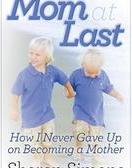Discus thrower Aretha Thurmond arrived at the U.S. Olympic track and field trials last month and realized that something remarkable had happened to her sport.
Children. Lots of them.
View more videos at: http://nbcconnecticut.com.
When she made her first Olympics in 1996, Thurmond didn’t notice any women with kids on the track and field team. There were a couple when she returned in 2004, and maybe a handful in 2008. But at this year’s trials they seemed to be everywhere.
Thurmond brought her 5-year-old son to the athletes’ hospitality suite and found two-dozen other children running around as if they were at preschool.
“I was like, ‘Where did all these kids come from?’” Thurmond, 35, recalled.
But really, she knew.
Thurmond is among the many elite female athletes discovering that they don’t have to cut their careers short to start families and that they can continue to compete at world-class levels after giving birth. These women view themselves no differently from those who return to the office after maternity leave — although it can take an athlete a year to get back into shape.
“Before, what cut a lot of women’s careers short was the belief that once they started a family, that was it,” said Thurmond, who qualified for her fourth Olympics. “But we’re showing people that you can have kids and go back to work, to athletic training. You come back stronger from the experience, not weaker.”
That change has not come easy. The past few decades are littered with examples of how poorly the sporting world understood the female body. Doctors once believed the women couldn’t play full-court basketball. For a long time, Olympic officials didn’t think women were cut out for long-distance running events like the 800m and marathon. More recently, physicians advised pregnant women against allowing their heart rates to rise above 140 beats per minute.
Hogwash, all of it.
The rise of mothers in elite sports is “the next revolution in recognizing that pregnancy isn’t a disability,” said Bill Moreau, managing director of sports medicine for the U.S. Olympic Committee.
There have been individual examples of Olympic moms, including gold-medal sprinter Wilma Rudolph in 1960. But the “revolution” can be traced to a 1972 federal law that expanded educational and athletic opportunities for high school girls, said Cindy Chang, a sports medicine specialist at the University of California-Berkeley and the chief medical officer for the U.S. Olympic Team.
“It starts with Title IX,” Chang said. “It became more acceptable for girls to be active and play sports, and with that came more opportunities for women in college sports and professional sports.”
As more women chose to pursue athletic careers, they began to confront the decision of whether to start families, Chang said. Those who had children found that, with guidance from their doctors, they were able to return to the same level of performance they’d reached before becoming pregnant. In some cases they got better.
Most importantly, their success has contributed to a broader shift in popular opinion about mothers – not just Olympic-caliber athletes — returning to athletic competition.
“Now it is acceptable and not looked down with disdain,” Chang said.
Among American Olympians alone, the stories are legion. Swimmers Dara Torres, Amanda Beard and Janet Evans. Soccer player Christie Rampone. Tennis player Lindsay Davenport. Beach volleyball player Kerri Walsh. High jumper Amy Acuff. Basketball player Candace Parker. Weightlifter Melanie Roach. Marathoner Kara Goucher. Judoka Valerie Gotay. The list keeps getting longer, to the point where these so-called “comebacks” seem less extraordinary and more mainstream. Olympic moms now have their own marketing category, including a Pampers endorsement for Walsh and FRS energy drinks sponsorship for Rampone.
What most people don’t see is how punishing their journeys are.
Every elite athlete handles pregnancy differently, but all have to deal with adjusting their strict training regimen. Instead of following any set guidelines, the women consult their doctors, who typically advise them that they should listen to their bodies for signals that they’re pushing themselves too much. The only automatic no-nos are allowing their bodies to get too hot and subjecting their abdomens to rough jostling.
Cases vary widely. Olympic marathoner Paula Radcliffe ran throughout her two pregnancies, up to the day she gave birth. Thurmond never stopped lifting weights or throwing the discus. Others choose to downgrade to light cardiovascular exercise. Some end up on bed rest.
The biggest challenge begins after the baby arrives.
It can take a year for mothers to return to their pre-pregnancy fitness level. Many have to shed as much as 40 or 50 pounds. The process can be depressing, and that’s just the physical part. There’s also the pressure – from the media and other athletes – to set an example. At the same time, it’s not uncommon for mothers to lose corporate sponsorships while on maternity leave. They have to get day jobs and lean on others – spouses, parents, other relatives – for help.

